Borneo, Sabah, Sipadan, & More Eastern Malaysia



Borneo, Sabah, Sipadan provide unlimited scuba diving adventures. The Island of Borneo has been home to a tropical rainforest for the past 140 million years. The Cretaceous period trees and plant life have given way to modern Quaternary period tree and plant varieties, but this region still remains a densely covered reserve for animals such as sun bears, Sumatran rhinoceros, pygmy elephants, Bornean clouded leopard, and horned bill birds. The man of the forest, pronounced locally as Orang utan, is currently the largest living primate in the world, though some their extinct ancestors were even larger. We think what really makes them special is their ability to problem solve, use tools, and interact socially. For instance, if they have an upset stomach, they know where they can find and eat clay that will sooth their stomach. Unlike most humans, they make a fresh bed every night out of leaves and may even make a pillow or fashion a blanket. As far as social bonds go, they give and receive gifts from each other, and just like humans, they remember what gifts were exchanged and the relevance of the gift per member in the standing social hierarchical order. Yes, humans are not the only specie that can disappoint close relatives, holidays or not. Choose your dive adventure to Malaysia.



But back to Borneo; Borneo is the third largest island in the world and is currently divided between three countries. 73% of the island is part of Indonesia, the northern 26% is part of Malaysia, and 1% is comprised by the sovereign state of Brunei. The last time the island was under one rule was during World War Two when the Imperial Japanese Forces were implementing their “Asia for Asia” tour. During this time, many Malay intellectuals, Malay Sultans, and Chinese residents were executed. British and Australians prisoners of war were placed in camps or sent on death marches; Only 6 out of 2,500 prisoners survived the Sandakan Death March.



Further back in history, before the end of the ice age when sea levels were lowered by some 60m (200ft), this island was part of a large peninsula extending all the way to Asia. Deep waters on the east side of the island of Borneo kept animals such as the tiger, rhinoceros, and elephant from crossing over to the island of Sulawesi in Indonesia and on towards Papua New Guinea and Australia. Conversely, this deep water, also called the Wallace Line, kept Indonesian animals such as two species of Anoa (miniature water buffalo), Babirusa (a curling tusked pig), and many other smaller placental and marsupial animals from ever entering Asia. And since it is the waters that intrigue us divers the most, this is what we will bring up next.
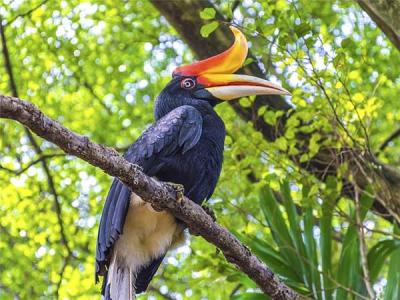
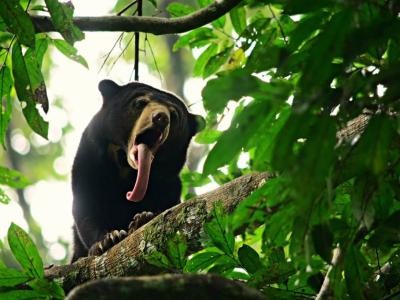

So, out of 394 named islands or pulau, as the locals call them, and 535 unnamed islands around Borneo, the number one spot to dive has to be a small remote island formed by volcanic activity. Keeping with the Borneo, Sipadan, Sabah theme, let’s focus on Sipadan. The Island known as Sipadan is the only oceanic island in eastern Malaysia and this affords great muck diving a beach walk from shore on the largest barrier reef in Southeast Asia and the added benefit of nearby pelagic species that appear out of the 2,000ft (600m) depths that separate Pulau Sipadan from Sulawesi Indonesia. This means that on one dive you can experience seahorses, cuttlefish, shrimp, and frogfish, and on the next dive see whale sharks, hammerheads, mantas, and schools of barracuda, humphead parrot fish, and tuna. Jacques Cousteau once called Sipadan one of the top five places to dive in the world. This status brought too many divers to the region and reef degradation soon ensued, but since 2005 the island has been transformed back into a marine park. Park Management only issues 120 permits to dive the Island each day, and the system operates sort of like a lottery system, in that if you stay at a resort 3-4 days, you most likely will get a permit to dive Sipadan at least one day. It’s not a precise or perfect system, but since the instillation of the permit system, thousand-year-old reefs have made a tremendous comeback.


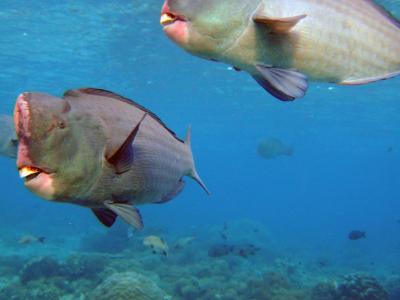
Pulau Sipidan boasts some 20 dive sites, with the majority on reefs or walls that eventually descend into deep surrounding depths. We recommend visiting here as an advanced diver or better, as you may encounter down wellings such as at Barracuda Point and you must be comfortable with deep diving as the scalloped hammerheads and thresher sharks at South Point prefer to school down at 40m (120ft). Turtle Cavern is the resting site of several turtles that didn’t find their way out of the cavern possibly due to stormy nights and temporary silted conditions, but to make sure you have a great dive and return trip from this eerie location many places offer cavern training before you dive this site. We should mention that it’s almost mandatory to dive here with a camera as The Drop off site is one of the most photographed dive sites in the world. The Drop off is a popular location for night dives too. Lobster Lair is another hot spot for photographing crevice critters. To name a few other dive sites, Hanging Gardens is the place to view dazzling ledges of soft corals, Turtle Patch is a great place to see green turtles and occasional hawksbill turtles, and White Tip Avenue is the place to see a wide variety of sharks including, yeah you guessed it: white tip sharks.
Now because no one can stay on Pulau Sipadan overnight, dive operators who receive finite allotments of dive permits for each individual day bring their guests over from islands such as Pulau Mabul, Pulau Kapalai, from the former oil rig turned Seaventures dive resort, or from the Borneo mainland city of Semporna. Pulau Mabul is 25minutes away by boat from Sipadan and has several resorts and over a dozen muck diving sites to choose from. Some of the most well known dive sites include Paradise 1&2, Lobster Wall, Froggy Lair, Coral Reef, and Eel Garden. Offshore of Palau Mabul is the popular muck dive site and home reef of the former oil rig Sea Venture. Pulau Kapalai is actually a submerged sand bank surrounded by reef and the only resort on this island is built on stilts and features 59 chalets. The reef here also offers muck diving opportunities.


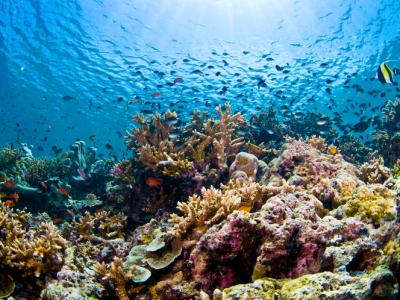
The port city of Semporna is also the gateway to the northeast islands. Pulau Si Amil is the spot to find rare nudibranchs. Pilau Mataking is the honeymooner island and is one of the few places in the world with an underwater post office box, which could come in handy if you had to choose between diving a wreck or mailing off postcards. Pulau Sibuan offers muck diving for those primarily captivated by frogfish, pygmy seahorses, and mandarin fish, and deep channel diving for divers favoring mantas and stingrays. Pulau Mantabuan also hosts mantas, but it is better known for its displays of black coral.


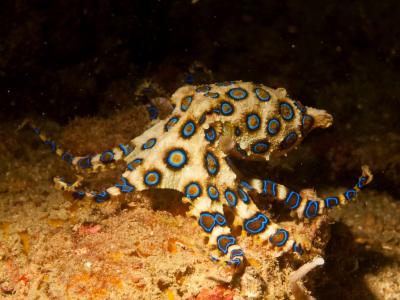
Continuing with Borneo, Sabah, Sipadan in Eastern Malaysia, we come to Sabah. The port city for Sabah is Sandakan. Close by are the Turtle Islands: Selingaan, Gulisaan, and Bakkunganke. An hour and a half boat ride from Sandakan is a marine protected area including the island of Lankayan. There are 32 named dive sites around the island or nearby including: Jawfish Lair. Mosquito Wreck, and Froggie Fort to name a few. Visibility is less here when rain makes the mainland rivers run faster during December to March, but April and May are whale shark sighting season and turtle hatching season is June to September.
Off the west coast of Sabah, Borneo near the port city of Kota Kinabalu in the South China Sea, the most world famous island here has to be Pulau Tiga, which is actually a group of three islands where they just happened to film the first season of a dynamic and everlasting TV series called Survivor. There are 20 national cabins here and you can arrange a charter to bring you to and from the island so you can take a relaxing mud bath, but for serious divers your time is better spent muck diving around the island at locations such as Asmarqa Point or Coleman Shoal. Pulau Tiga is part of the rest of the Tunku Abdul Rahnab Park (TARP) and there is also plenty of diving on the five islands of Pulau Manukan, Pulau Gaya, Pulau Sapi, Pulau Mamutik, and Pulau Sulug. Besides the 25 dive sites within the park, there are other dive sites in the surrounding area. Leopard Reef is known for its small sharks and Edgell Patches is known for its occasional sightings of whale sharks.



Northwest of Kota Kinabalu are the easy to reach white sand beaches of Palau Layang Layang. This island is surrounded by13 reefs, wall dives, and pelagics such as scalloped hammerhead sharks, and is also part of the Sulu Sea. Near shore there is a group of three islands that make up the Matanani islands and a great place for photographers and macro divers.
At the very northern tip of Sabah, Borneo is the port city of Kudat with surfing, freediving, wreck diving, and even more off shore diving around Pulau Bangi. Scientists researching in the fields of biology, ecology, oceanography and other earth sciences collect here because this is the spot where the Sulu Sea and the South China Sea fuse salt contents, blend grains of sand, and mix microscopic nutrients. Meanwhile in the surrounding atmosphere, the Northwest monsoons entertain one and all from November to December then give way to the Southwest monsoons from May to October, making March and April an ideal dry time to visit here. Notable mentions: Pulau Maliangian Kecil has a nice lagoon, and Pulau Maliangin Besar has giant lobsters. Tajau Laut Reef is the place to go for a night dive. Mysterious Shipwreck is a 60m (180ft) long cargo ship ready to be explored.



Phew! So, as you can see, we barely put a dent in naming all but a few of the hundreds of islands around Borneo, Sabah, Sipadan in Eastern Malaysia. You might see whale sharks at any or all the local dive sites or none at all. Dugongs, a more refined nose and mouth relative of the manatees, but have sleek flukes for tails instead of flattened spoon shaped like beaver tails, are more commonly found on the northwest waters of Borneo where sea grass is more plentiful. Other marine life may vary greatly from island to island including reef structure and quantities of sharks and turtles.



Kota Kinabalu is the main airport hub in Northern Borneo and a great place to stay if you want to do some shopping or visit a large night market will all the exotic foods and delicacies to choose from. From here it’s less than an hour flight to Sandakan. To get to Semporna you must first take an hour flight to Tawau, and then take a bus ride up to Semporna. You can take a nonstop flight to Kota Kinabalu from Kuala Lumpur or take a direct flight from Singapore, but keep in mind though; the word “direct” sometimes means possible stops anywhere, including Antarctica. Oh, and the only way you can see all the major islands in one trip is to spend more than a fort night give or take a year traveling to most of the islands one at a time, but who in their right mind wants to walk along so many pristine beaches, explore so many vibrant reefs, eat so many varieties of foods from so many subcultures, just to satisfy a primal urge to see what the world below really does have to offer those that need to keep air in their regulator, water in their snorkel, and a mask practically glued to their face?

Recent Posts
- Eastern Malaysia, Sabah, Sipadan & More
- Ghost Pipefish, Pipefish, Seahorses, and Sea Dragons
- Australia Queensland and the Great Barrier Reef
- Tioman Islands, Malaysia
- The Riviera Maya
- The Peter Diving System
- The Bay Islands, Roatan, Utila, Guanaja, and more.
- The Cuttlefish; The Undisputed Master of Camouflage.
- The Maldives: A Garland of Islands in the Indian Ocean
- Frogfish, The Overlooked Camouflage Artist
Categories
- Australia
- Bahamas
- Bay Islands
- Belize
- Blue Hole
- Bonaire Diving
- Borneo
- Cayman Brac
- Cayman Islands
- Cozumel
- Curacao
- Cuttlefish
- Dive Destinations
- Dive Equipment
- Dive Liveaboards
- Dive Resorts / Properties
- Dive Travel
- Dive Travel Deals
- Diver Wellness
- Dolphins
- Dominica
- eagle rays
- Eagle Rays
- Family Travel
- Fiji
- Galapagos Islands
- Great White Shark cage diving
- Guanaja
- Honduras
- Indonesia
- Infographics
- Isla Mujeres
- Learning to Dive
- Little Cayman
- Maduro Dive Newsletter
- Malaysia
- Maldives
- Manta Rays
- Marine Life
- Mexico
- Micronesia
- Muck Diving
- Myamar
- Palau
- Papua New Guinea
- Pelagics
- Philippines
- Pinnacles
- Polynesia
- Reefs
- Riviera Maya
- Roatan
- Saba
- Sabah
- Scuba Diving
- Scuba Gear Reviews
- Scuba News/Events
- Scuba Training & Education
- Sea Legends
- sea lions
- Sea of Cortez
- Sharks
- Single Travel
- Sipadan
- Socorro Islands
- South Africa
- Specialties
- ST. Kitts
- Stingrays
- Tahiti
- Thailand
- The Bucket List
- Tobago
- Truk Lagoon (Chuuk)
- Turks and Caicos Islands
- Turtles
- Uncategorized
- Underwater Photography
- Underwater Video
- Utila
- Walls
- Whale Sharks
- Whales
- Wreck Diving
- Wrecks
- Yap
Archives
- January 2024
- April 2023
- March 2020
- March 2019
- January 2019
- November 2018
- September 2018
- July 2018
- May 2018
- March 2018
- January 2018
- October 2017
- September 2017
- June 2017
- April 2017
- February 2017
- January 2017
- October 2016
- August 2016
- July 2016
- May 2016
- March 2016
- February 2016
- January 2016
- December 2015
- August 2015
- June 2015
- April 2015
- January 2015
- November 2014
- July 2014
- April 2014
- February 2014
- December 2013
- November 2013
- October 2013
- September 2013
- August 2013
- July 2013
- June 2013
- May 2013
- April 2013
- March 2013
- February 2013
- January 2013
- December 2012
- November 2012
- October 2012
- September 2012
- August 2012
- July 2012
- June 2012
- May 2012
- April 2012












